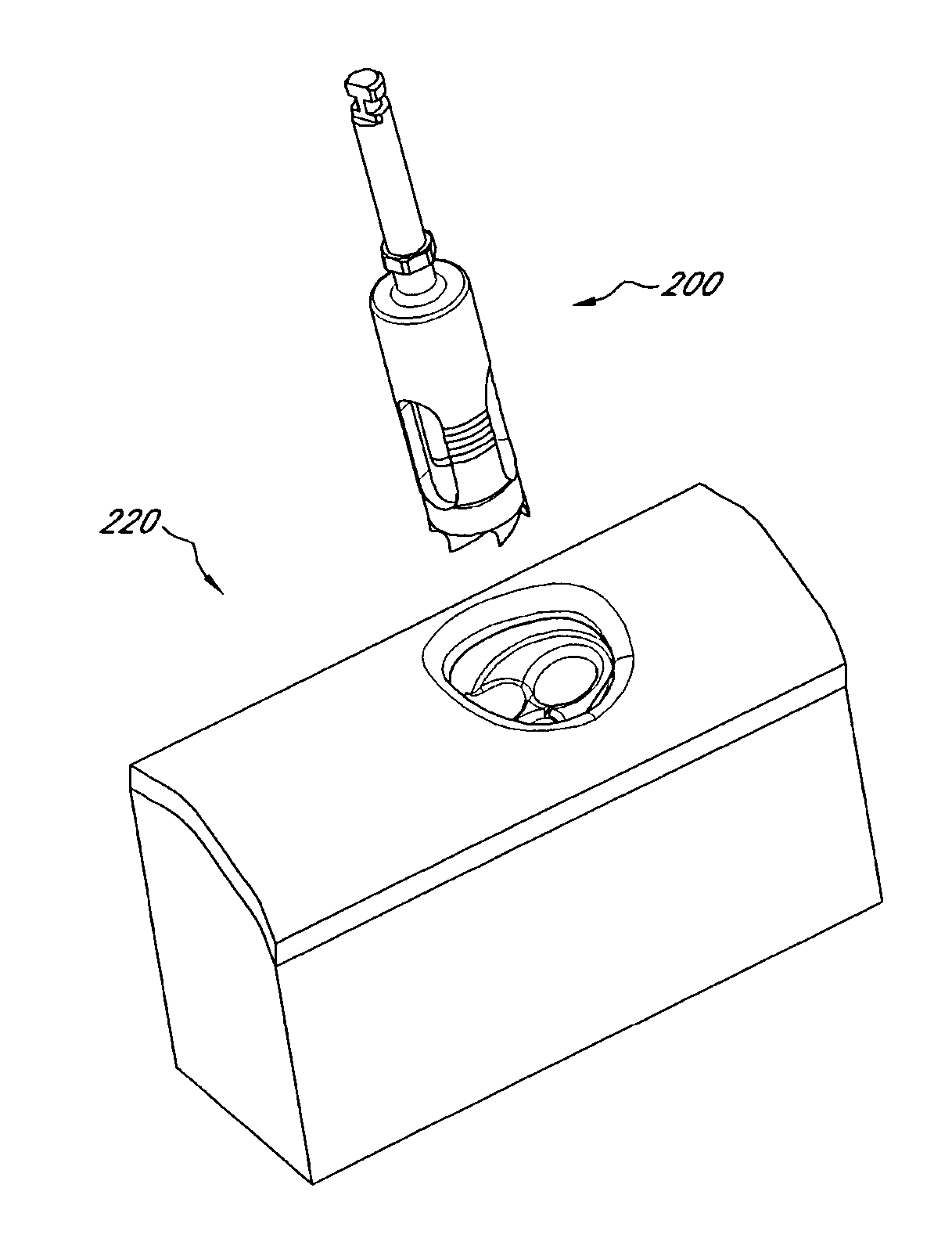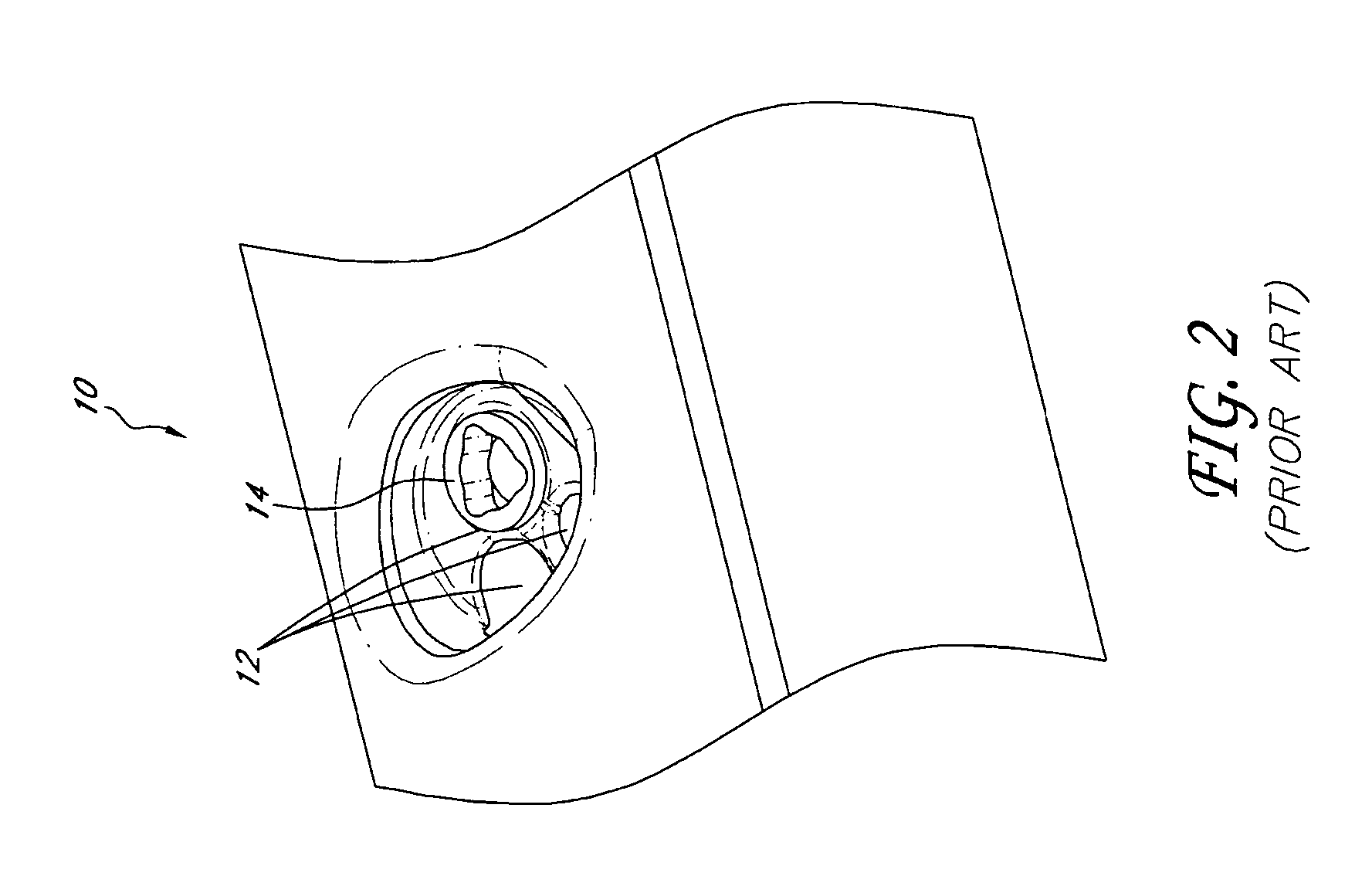Device and procedure for implanting a dental implant
a technology for dental implants and devices, applied in dental surgery, dental tools, medical science, etc., can solve the problems of adding additional stress to implants, burdening patients, and difficult to place trephine drills in such a manner as to maintain desired positions, so as to improve cutting accuracy, improve control over tools, and improve the effect of tool control
- Summary
- Abstract
- Description
- Claims
- Application Information
AI Technical Summary
Benefits of technology
Problems solved by technology
Method used
Image
Examples
Embodiment Construction
[0076]While the present description sets forth specific details of various embodiments, it will be appreciated that the description is illustrative only and should not be construed in any way as limiting. Furthermore, various applications of such embodiments and modifications thereto, which may occur to those who are skilled in the art, are also encompassed by the general concepts described herein.
[0077]As discussed above, previous implantation procedures have various disadvantages. For example, when a tooth is extracted and replaced with an implant, a surgeon would have to utilize existing tooth sockets in order to perform such a procedure within a short time frame. Unfortunately, in order to perform such a procedure, an implant would require that an angled abutment be used in addition to the implant in order to compensate for the off-axis geometries of the tooth sockets. As noted above, the use of an angled abutment results in an off-center final restoration. In another example, a...
PUM
 Login to View More
Login to View More Abstract
Description
Claims
Application Information
 Login to View More
Login to View More - R&D
- Intellectual Property
- Life Sciences
- Materials
- Tech Scout
- Unparalleled Data Quality
- Higher Quality Content
- 60% Fewer Hallucinations
Browse by: Latest US Patents, China's latest patents, Technical Efficacy Thesaurus, Application Domain, Technology Topic, Popular Technical Reports.
© 2025 PatSnap. All rights reserved.Legal|Privacy policy|Modern Slavery Act Transparency Statement|Sitemap|About US| Contact US: help@patsnap.com



